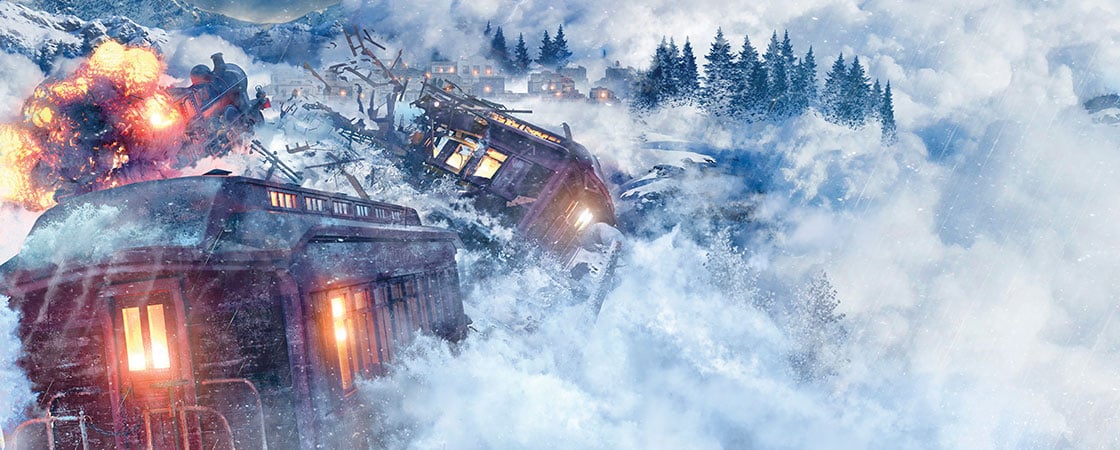Would they ever escape from this train?
That’s what 8-year-old Raymond Starrett must have been wondering on the night of February 28, 1910. For six days, Raymond and his mother, Ida, along with dozens of others, had been trapped on a train in the middle of Washington State’s Cascade Mountains.
They’d been two-thirds of the way through a 300-mile journey across the state of Washington when their train, the Seattle Express, had collided with a ferocious blizzard. Snow gushed from the sky and blocked the tracks. Howling winds shook the train cars.
“We’ll be moving shortly!” the conductor had promised.
But the blizzard raged on and on . . . and on. Hours turned to days. And now, as Raymond and the other passengers bedded down for their sixth frigid night, passengers were fighting panic. Food was scarce. There was nothing to drink but melted snow. The cars reeked of clogged toilets and sweaty bodies.
The frightened, exhausted passengers surely wondered when the nightmare would end.
But in fact, the real nightmare was about to begin.
A few hours later, as Raymond and the others slept, massive hunks of snow broke loose from the steep mountainside that loomed above the stranded train. In the blink of an eye, the snow turned into a killer wave—a monstrous avalanche of snow, ice, boulders, and broken trees. It careened down the mountainside, obliterating everything in its path.
And now this killer wave was heading straight for the train.
Would they ever escape from this train?
That’s what 8-year-old Raymond Starrett must have been wondering. It was the night of February 28, 1910. For six days, Raymond and his mother, Ida, had been trapped on the train. Dozens of other people were trapped with them in the middle of Washington State’s Cascade Mountains.
They were two-thirds of the way through their journey across the state of Washington when their train, the Seattle Express, had run into a ferocious blizzard. Snow gushed from the sky. It blocked the tracks. Howling winds shook the train cars.
“We’ll be moving shortly!” the conductor had announced.
But the blizzard raged on and on . . . and on. Hours turned to days. And now, on their sixth freezing night, the passengers were fighting panic. Food was scarce. There was nothing to drink but melted snow. The cars stank of clogged toilets and sweaty bodies.
The scared, exhausted passengers surely wondered when the nightmare would end.
But in fact, the real nightmare was about to begin.
A few hours later, as Raymond and the others slept, huge hunks of snow broke away from the steep mountainside above the stranded train. In the blink of an eye, the snow turned into a killer wave—a monstrous avalanche of snow, ice, boulders, and broken trees. It careened down the mountainside, destroying everything in its path.
And now this killer wave was heading straight for the train.

